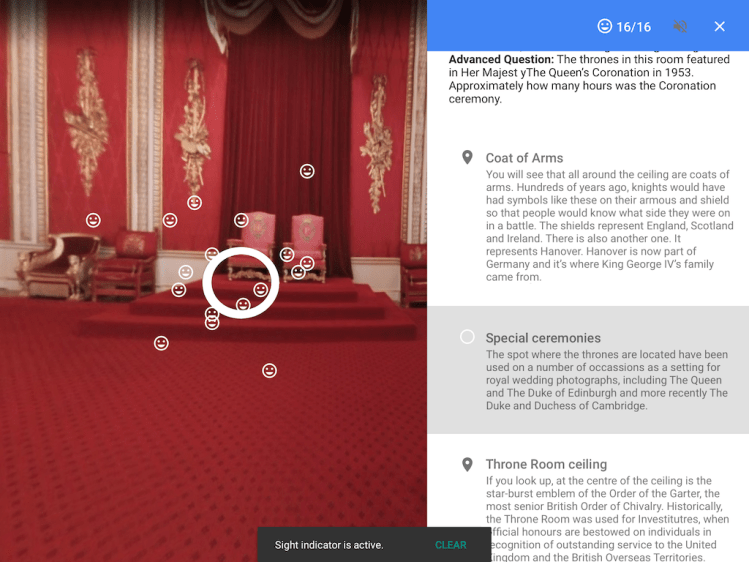Google is announcing today a new dedicated Android app for its Expeditions Pioneer Program that brings virtual reality experiences into schools through Google’s Cardboard virtual reality platform.
Google is also introducing two new Expeditions for teachers and students to explore: London’s Buckingham Palace and the Great Barrier Reef off of the Australian coast.
The Expeditions program has clearly been gaining momentum since Google introduced it in May 2015. As of now, more than 500,000 students have taken trips through the Expeditions Pioneer Program, Google’s education program manager Jennifer Holland wrote in a blog post. Just a couple of months ago, Google said that more than 100,000 students had participated in the program.
In focusing on the education market — as it has done with Google Apps and Chromebooks — Google is driving adoption of Google Cardboard, making it possible for lots of people to use the platform. This strategy makes Cardboard different from more expensive VR systems like the Oculus Rift, the Samsung Gear VR, and the HTC Vive. And Microsoft’s HoloLens augmented reality system likely won’t be for everyone, either — the developer kit costs $3,000.
Google is quickly releasing first-party apps that work with Cardboard, even as the third-party Cardboard app ecosystem flourishes. YouTube has Cardboard mode. There is the Android-only Cardboard Camera app for making 360-degree, three-dimensional panoramas. And now there is Cardboard Expeditions, as well.
Google Expeditions on Android is available in beta to “select schools and educators that sign up to participate,” Holland wrote. The sign-up form is here.


